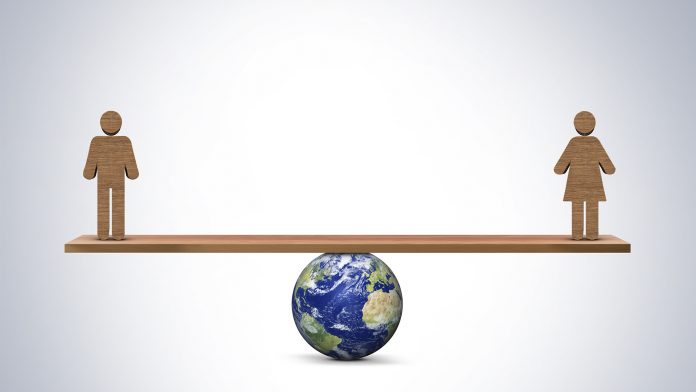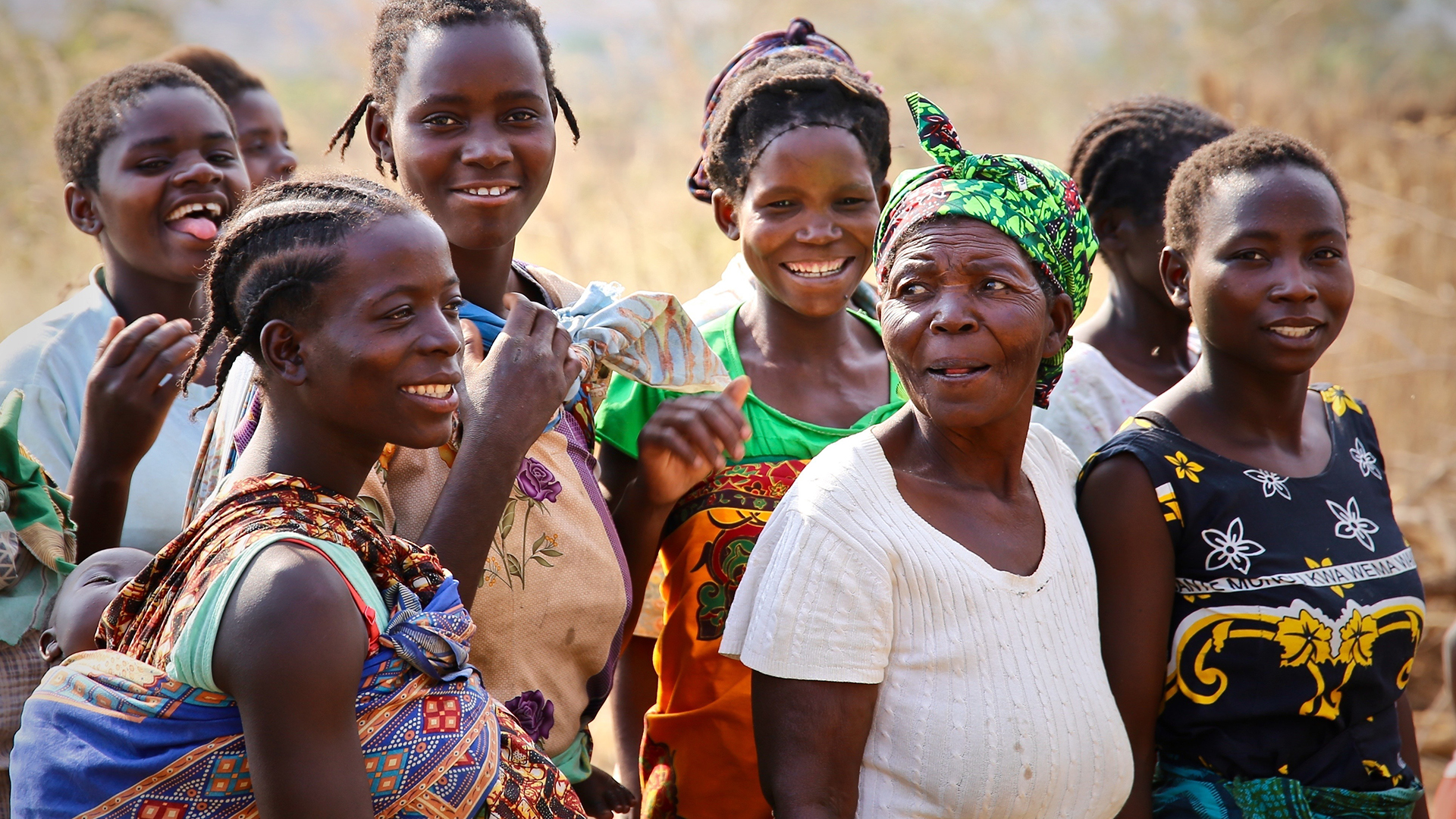
We discuss progress on the Sustainable Development Goals and gender equality with Ginette Azcona, Research and Data Policy Specialist at UN Women.
‘Achieve gender equality and empower all women and girls.’ So reads Goal 5 of the Sustainable Development Goals, which form part of the UN’s 2030 Agenda, adopted in 2015. Comprised of 17 goals and 169 targets, the global action plan seeks to end poverty and hunger, protect the planet from further degradation, and improve human rights. However, less than a decade away from the 2030 endpoint and many are feeling less and less optimistic about the world’s drive to recognise and mitigate the drivers of gender-based inequalities.
Global challenges such as the COVID-19 pandemic have brought multifaceted implications for women’s health and wellbeing, particularly in low and middle-income countries. According to an SDG report by UN Women, globally, more than one in every ten women and girls aged between 15-19 were subjected to sexual and/or physical violence by an intimate partner in 2021. The pandemic also derailed progress in poverty reduction, food security as well as access to vital healthcare services and education.
As a United Nations entity, UN Women helps to drive forward the gender equality agenda by supporting UN Member States in designing and implementing laws, policies, programmes, and services that truly benefit women and girls. As part of its vision to make the SDGs reality, UN Women coordinates and promotes the UN system’s work in advancing gender equality, and in all deliberations and agreements linked to the 2030 Agenda. To discuss progress on the SDGs and gender equality, Lorna Rothery spoke to Ginette Azcona, Research and Data Policy Specialist at UN Women.
How has the COVID-19 pandemic, and other global challenges, impacted progress on the 2030 Agenda in the context of women’s health and gender equality?
The latest available data show that the world is not on track to achieve gender equality by 2030 and this means that the world is also not on track to achieve the 2030 Agenda. As we outlined in our flagship report, Progress on the SDGs: The Gender Snapshot, at the current rate, full gender equality may take close to 300 years to be achieved. COVID-19, climate change, war, conflict, and the backlash against women’s sexual and reproductive health and rights are key contributors to a diminishing outlook for gender equality.
In the area of health, the COVID-19 pandemic has devastated health systems in rich and poor countries alike, left poorer women without care and with worse physical and mental health, and across countries worsened women’s chances for a healthy life. In Brazil, for example, during the height of the pandemic, municipalities with a high incidence of poverty and inequality and limited health resources had greater maternal mortality compared to municipalities with better social and health infrastructure. In Canada, while women who were pregnant during the pandemic were twice as likely to show symptoms of depression and anxiety, the rate was even higher among those from low-income households.
Women’s life expectancy globally has shortened by 1.6 years when comparing 2021 with 2019. In some countries, the drop is even higher (South Africa 4.1 years for example). Women’s mental health is also worse off and more so than men’s. Prevalence of anxiety is up 28% for women, compared to +22% for men and major depressive disorders are also up, +30% for women, compared to +24% for men.
In addition, stagnating and in some cases increasing adolescent birth rates among girls with no or little primary education and among the poorest girls are apparent in some developing countries. In rural Kenya, for example, adolescent girls were twice as likely to fall pregnant before completing secondary school or to report that their first sex was not desired compared to similar girls graduating just before the pandemic.

Legal restrictions, including the criminalization of abortion, continue to compound the challenges women face in accessing safe sexual and reproductive healthcare. Today, over 1.2 billion women and girls of reproductive age (15-49) live in countries and areas with some restriction on access to safe abortion, including 102 million that live in places where abortion is prohibited altogether.
How does gender-based discrimination impact women’s health and wellbeing, and access to healthcare?
Gender-based discrimination affects women’s health and wellbeing in several ways, including via the unequal distribution of power and resources; globally, women hold just 26% of parliamentary seats. This means that in key spaces of decision-making, where decisions around the allocation of resources are made, including on healthcare services, women do not have an equal voice and say. In these settings, it is not surprising that healthcare priorities that affect women in particular, e.g., maternal health and programming related to reducing adolescent fertility are not given adequate attention.
Another factor is exposure to physical and sexual violence. Globally, more than ONE IN EVERY TEN WOMEN AND GIRLS aged 15-49 was subjected to sexual and/or physical violence by an intimate partner in the previous year (12.5%). Despite a growing number of countries with legislation to stop and prevent domestic violence, it remains commonplace and increased during the pandemic.
Distribution of unpaid care work is also an issue. In 2020, school and preschool closures required 672 billion hours of additional unpaid childcare globally. Women, traditionally seen as the caregiver (men as the breadwinner) shouldered the bulk of this extra unpaid work, often sacrificing time spent on paid work. The gender gap in hours worked in employment, already large before the pandemic, has expanded globally, threatening to increase pervasive gender pay gaps. In some cases, women have left the labour force altogether, reversing progress made in recent years with regard to women’s employment.
Can you outline some key steps that have been taken so far to improve women’s rights, health, and wellbeing?
Countries are taking steps to improve women’s rights, health, and wellbeing, including by increasing the proportion of births attended by a skilled health professional and expanding access in rural and remote areas. In the early 2000s, only 64% of births globally were attended by a skilled health professional, the figure according to the latest data (2015-2021) is 84%.
Another key step is the expansion of coverage to modern contraceptives. The proportion of women of reproductive age (15-49) who had their needs for family planning satisfied with modern methods has improved from 74% in 2000 to 78% in 2021. The pace of progress however needs to be accelerated.

Other areas, related to health, including access to safe water and sanitation, have also improved but remain low in some regions. For example in sub-Saharan Africa, only 65% of the population has access to basic drinking water services (up from 45% in 2000). Access to basic sanitation services in the region is even lower (33% in 2020, compared to 23% in 2000).
What advice would you give to world leaders about their response to the SDGs in the context of gender equality and women’s health?
Prioritise SDG 5 (gender equality), the 2030 Agenda cannot be achieved without it. Women’s health has taken a major hit as a result of COVID-19, and disruption in essential sexual and reproductive health services risks derailing progress in key areas, including the reduction in maternal mortality, adolescent fertility, and life expectancy overall. Women and girls from poor, marginalised groups in particular are at risk of seeing their health outcomes severely deteriorate.
Areas typically underfunded, mental health for example, need to be properly resourced as well. The effects of the COVID-19 pandemic are still with us and world leaders need to ensure resources are expanded and continue to be available to support women and their families with their healthcare needs. Support for women on the frontlines, including healthcare workers, as well as services for survivors of gender-based violence is also a key priority that world leaders ought not to neglect.
Are you optimistic that gender equality can be achieved?
The latest available data show that the world is not on track to achieve gender equality by 2030, without gender equality there is no reason to be optimistic about achieving the broader Agenda – it cannot be achieved if half the world’s population (women and girls) are neglected. It is that simple. But hope is not lost yet – if we act now, we can get back on track. To do so, politicians need to ready a course towards gender equality and stick to it. Too often, political will has floundered just when investments were most needed, leaving women with empty promises. It is time we come clean and acknowledge that gender equality is not going to come easy, it is too engrained and pervasive for that. But strong and steady commitments to reform, to investments, and to redistribution of power (where women and men are both at the decision-making table) can get us there. More tangible support, and by that, I mean ample and steadfast funding (money) towards gender equality priorities, is key to transformative change. It is time we went past rhetoric and fickle promises. The world’s women and girls deserve an equal chance at a long and healthy life. And that also means a life free from violence, harassment, and discrimination.
Click here to read the ‘Progress on the Sustainable Development Goals: The Gender Snapshot 2022’.
This article is from issue 25 of Health Europa Quarterly. Click here to get your free subscription today.










